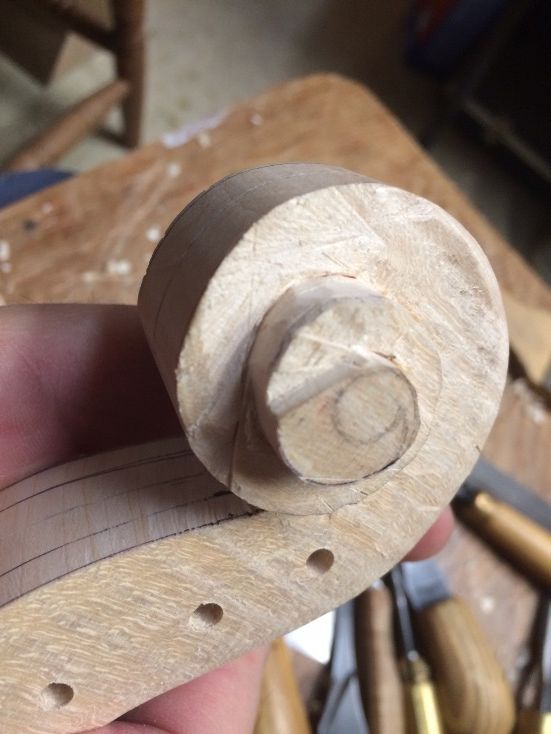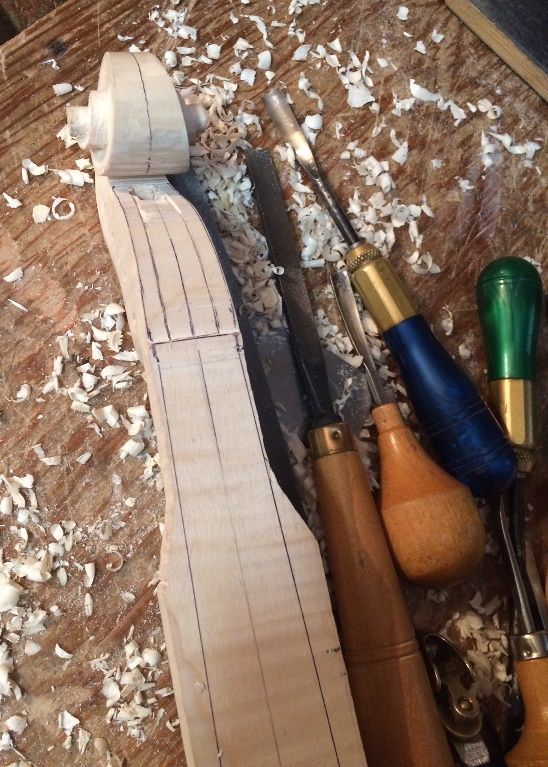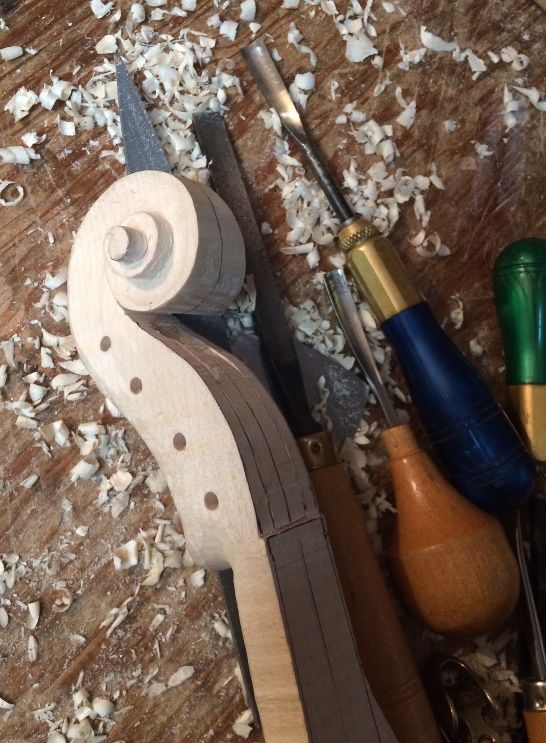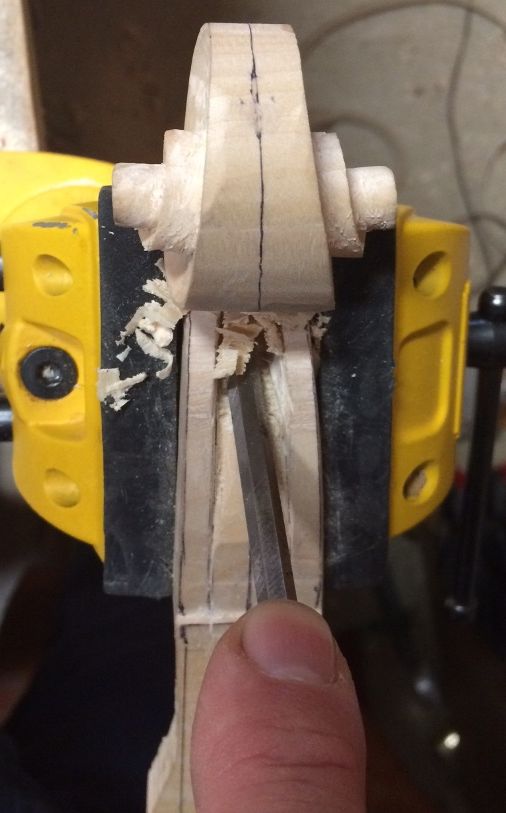Scroll Carving
Rough wood removal
In the last post, I demonstrated how I use a thin saw, to cut to the layout lines, so as to facilitate removal of the rough wood, preparing to carve.
Now I complete the removal of the rough wood and begin to carve.

Scroll-Carving







The next web-log post should include two completed scrolls, the installation of two fingerboards, and the setting of two necks. But perhaps that is too ambitious. The holidays seem to be a difficult time during which to get things done. (sigh…)
However, along with the graduation of both back plates, removal of the inside forms (molds) and the final assembly of the instruments, that is pretty much all that is left to do. Oh, yes, and purfling both plates on both instruments. I used to install purfling before completing the arching of the plates, but it frequently resulted in uneven plate overhang (with which I was quite disappointed) just because the purling had locked in the shape of the plates, and so, if the rib garland had changed shape at all, I was stuck. When I began purfling after assembly, the overhang problems pretty much went away.
Anyhow, that is how the project is progressing.
Thanks for looking.

 Follow
Follow
